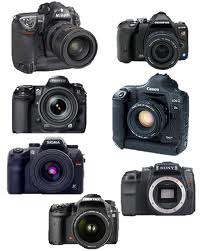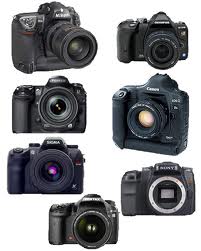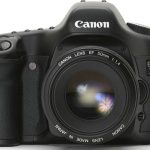 Taking great photos is an art that cannot be taught, it must be practiced. But you need to start somewhere and hopefully this article will give you a great place to start. In this article, we will cover the basics of photography and how to get running with using your awesome DSLR camera. In case you dont know what DSLR is, you are missing out – its Digital single-lens reflex camera ; a technology which allows you to capture exactly what you see in the viewfinder, while still removing the need for photo paper – keeping it digital. Neat, eh ? So, how to go about it ? Lets see :
Taking great photos is an art that cannot be taught, it must be practiced. But you need to start somewhere and hopefully this article will give you a great place to start. In this article, we will cover the basics of photography and how to get running with using your awesome DSLR camera. In case you dont know what DSLR is, you are missing out – its Digital single-lens reflex camera ; a technology which allows you to capture exactly what you see in the viewfinder, while still removing the need for photo paper – keeping it digital. Neat, eh ? So, how to go about it ? Lets see :
The Camera
The first step is to have a DSLR. Sorry but point-and-shoots are not suitable for manipulating many things on your camera. Most DSLR’s have the basic functions we will be covering so whether it’s a Canon, Sony, Nikon or Olympus, you’ll be good.
Aperture
The aperture controls how much light is getting into the sensor. Ever camera has a different aperture range and most lens have their own range. The lower the aperture, the more light gets into the cameras sensor and the better you can shoot in low light. The higher the aperture, the less light comes into the sensor. A great aperture for a sunny day is between 7 and 12, sometimes even higher. For low lit areas you don’t want to go above 3.5. Be careful, most lens have their own aperture as well, meaning they can only shoot with an aperture within a specific range. Generally, the lower the aperture, the more expensive the lens.
Time Value
Time value or shutter speed controls how fast the shutter closes. The faster the shutter speed, the less blur is added to moving objects, but it also means that the aperture must be set wider as well. For instance, on a sunny day, you may shoot with a time value of 4000. But at a birthday party in doors, you may not use a setting higher than 100. Your time value will depend on how wide your aperture is. So if you have a very short time value, be prepared to have a wide aperture. Under low lit conditions. This of course does not apply to bright days when it is acceptable to have 2000 for a time value and 9 for your aperture.
ISO
The ISO has to deal with image quality. The higher the ISO, the more grain you will notice in your photos. For instance, if you shoot with an ISO of 100, you will have a very crisp image under ideal conditions. However, if you bump that number in to the 1000’s, you will notice quite a bit of grain. Now ISO is there to allow for low light shooting and just because your ISO is high doesn’t mean the image will be grainy. The ISO is relative to that specific camera. For instance, an ISO of 3200 on a Canon T4i is almost unacceptable for anything but web use. However an ISO of 3200 on a Canon 5D Mrk II or Mrk III is extremely good.
Tying it Together
Now ever DSLR has a different place to hide the settings for these three functions. However, the all work the same no matter what DSLR you use. Ultimately you want to get yourself to the point where you can shoot comfortably in manual mode without a hitch. As a rule of thumb, remember these points.
- Low Light: shoot with a low aperture, and low time value. Your ISO should be adjusted as needed.
- Medium Light: shoot with a medium aperture and medium time value. ISO should be adjusted as needed.
- Sunny Day: shoot with a wide open aperture, high time value and an ISO that is between 100 and 400.



